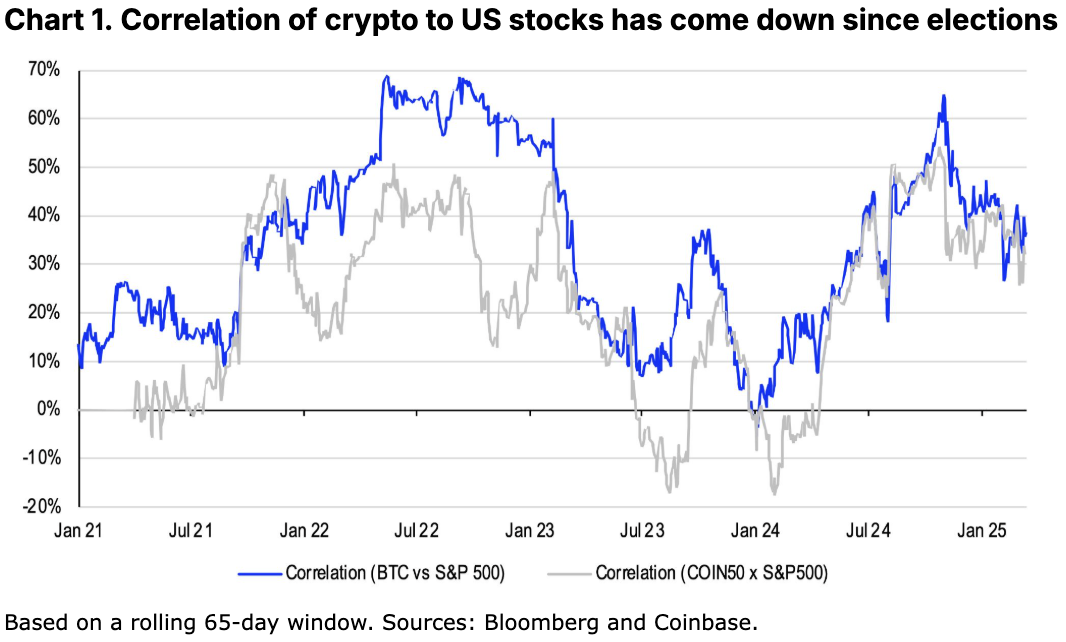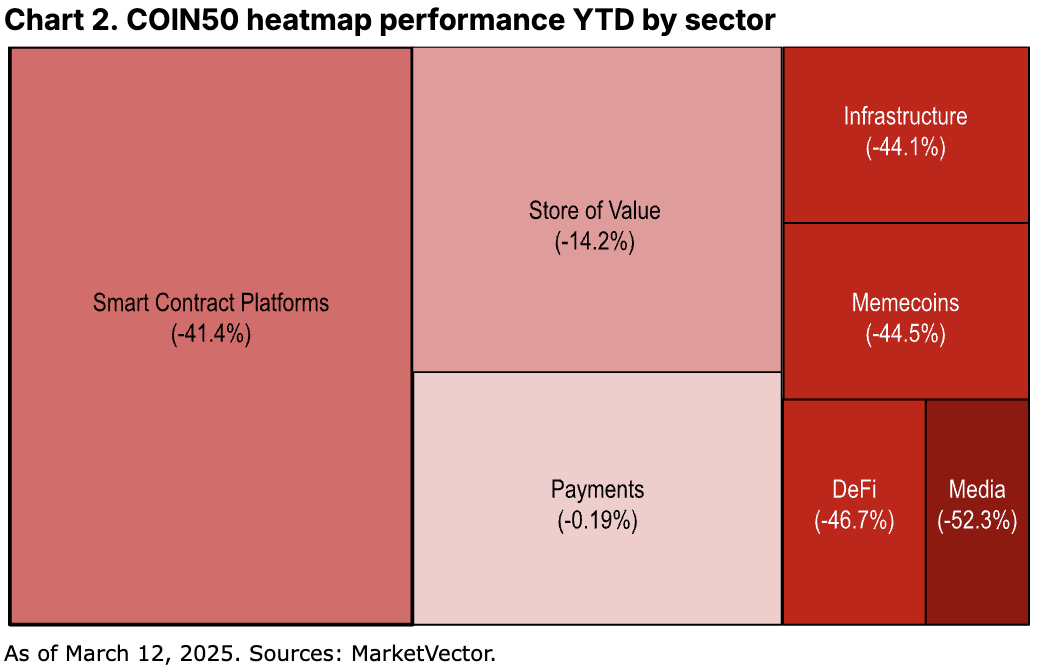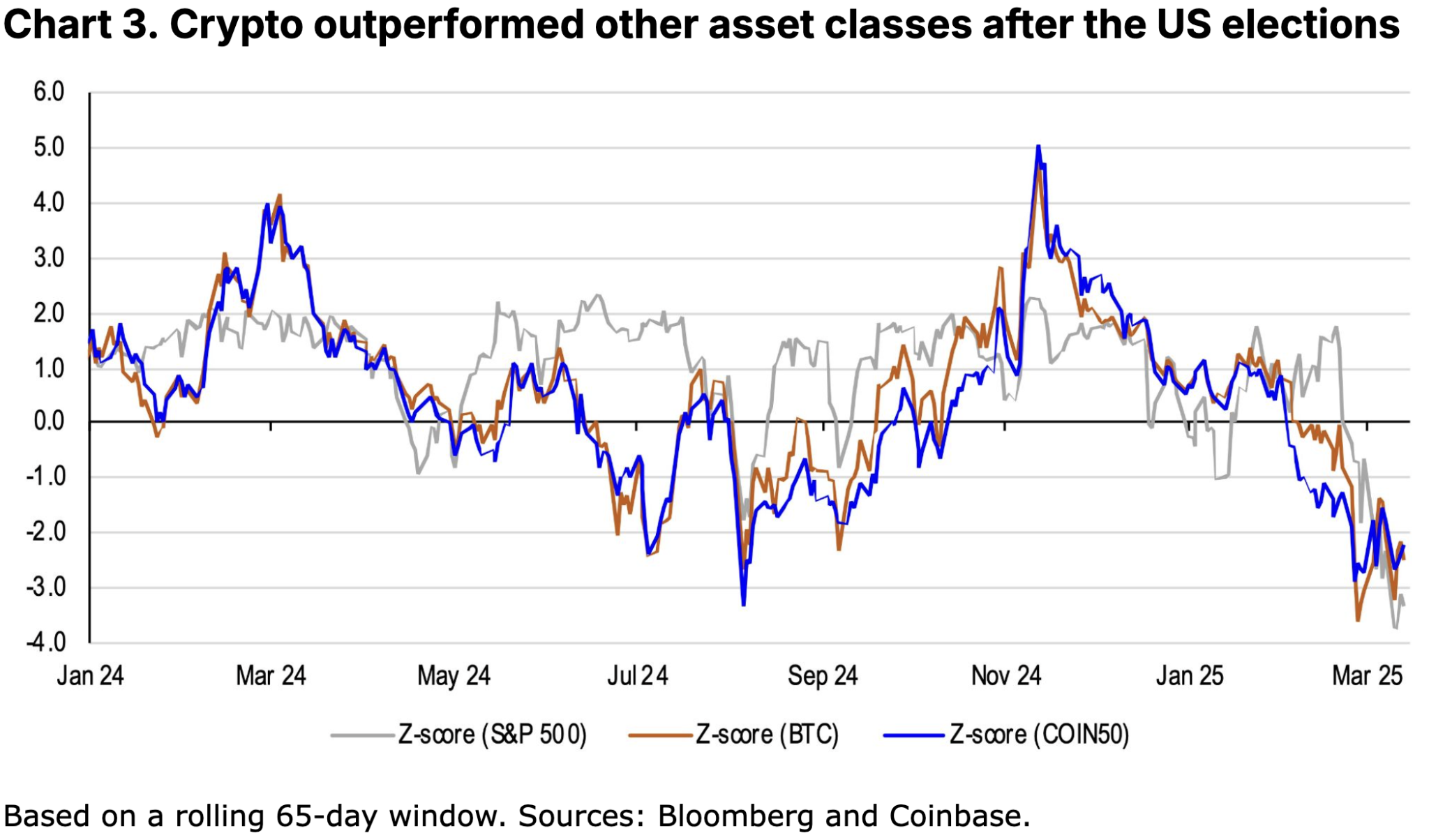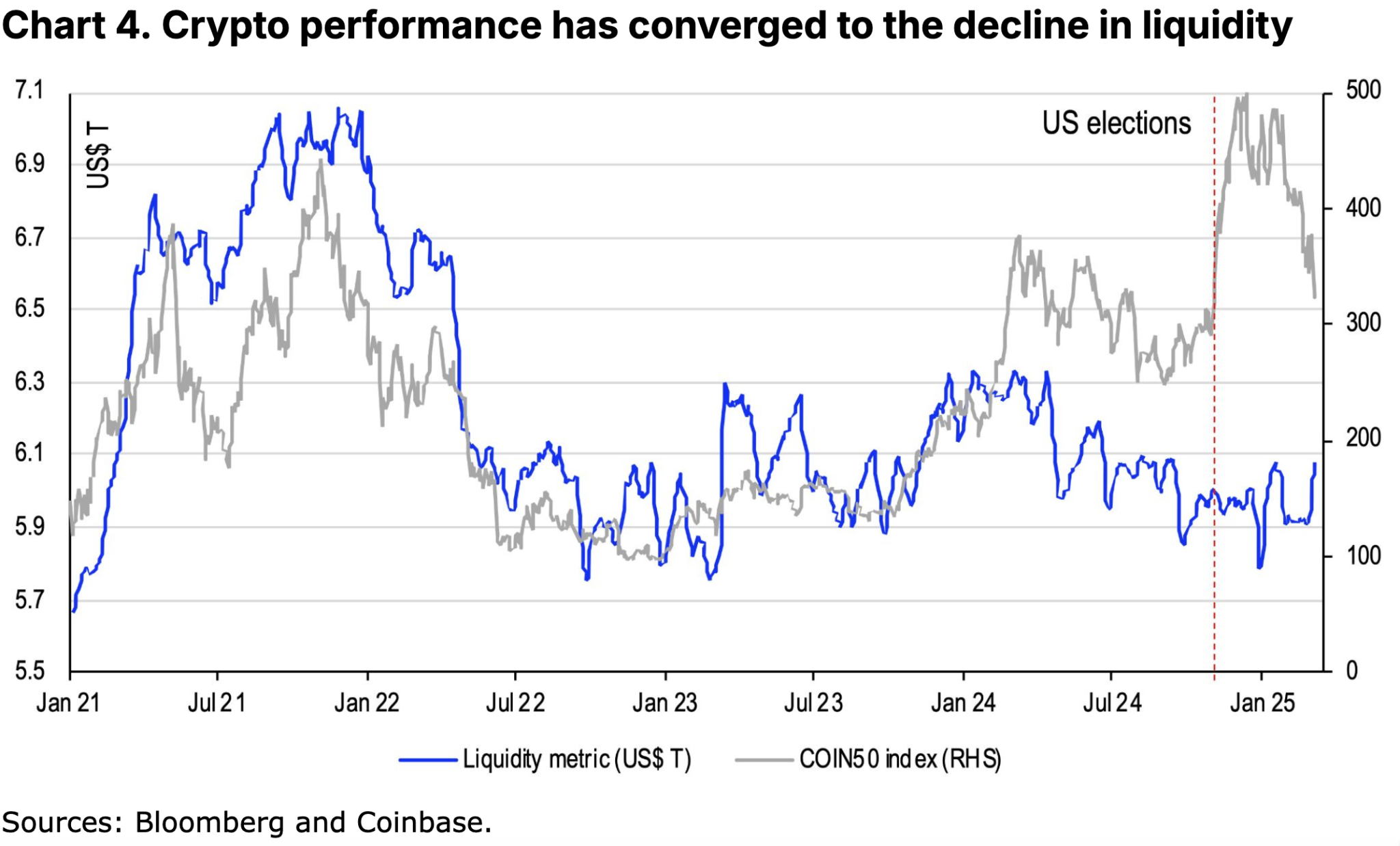Coinbase Monthly Outlook: Liquidity Inflection Point Has Arrived, Bitcoin May Lower in the coming weeks

Reprinted from panewslab
03/19/2025·2MAuthor: David Duong , CFA - Global Head of Research
Compiled: Tim, PANews
Market conditions in recent weeks have shaken our confidence in the more positive outlook for the first quarter of 2025 (this view was proposed in December 2024), as tightening liquidity and macroeconomic uncertainty erode investor confidence. Market consensus seems generally pessimistic at the moment, which is reflected in the decline of the total market value of cryptocurrencies below pre-election levels and the sharp decline in perpetual contract funding rates. We do believe that the speed and amplitude of this market pullback have confused many investors.
The current pessimistic market sentiment is mainly driven by concerns about the unstable trajectory of economic activity, especially after many investors over-focused on the "American Exception 2.0" narrative in recent months. As far as the crypto market is concerned, the momentum of special positive factors seems to have slowed down, which has made many market players feel anxious. However, we believe that the current pessimism is an important signal that the market may bottom out in the coming weeks, laying the foundation for us to hit a new high later this year.
Note: American Exceptionalism is one of the core ideologies that run through American history, advocating that the United States has uniqueness and even superiority in terms of political systems, values, development paths, etc. This concept not only shapes the United States' national identity, but also deeply affects its internal and diplomacy.
Global liquidity is beginning to recover, and the decline in real and nominal interest rates should ultimately help reduce borrowing costs. We also believe that long-term trends are likely to continue to support global growth in the future. That being said, we believe that the crypto market will have difficulty achieving an effective rebound before traditional risky assets recover, so we are closely watching whether there are signs of surrender-style sell-offs in the U.S. stock market. Compared with survey data, the financial report season (April) may be able to more accurately measure the real situation of American consumers. We will continue to maintain optimistic expectations for the second quarter of 2025, but we recommend that investors currently maintain a neutral stance on risky assets.
When will it bottom out?
Despite the recent emergence of many positive factors in the cryptocurrency field, such as the abolition of SAB 121 and the formal establishment of Bitcoin strategic reserves, the crypto market has remained weak since the beginning of the year. In addition, the SEC recently revoked several lawsuits against several crypto entities, including Coinbase, and the Stablecoin Innovation and User Security Act may be submitted to the U.S. House of Representatives and Senate for review in the summer of 2025.
Despite positive news from regulatory authorities, many market players are concerned that the catalyst effect unique to the crypto field is weakened. This has led to macro factors becoming the dominant force, and the correlation between the crypto market and US stocks is increasing. This is indeed the case. The recent trend correlation between traditional risk assets and the crypto market has clearly shown that our previous optimistic expectations for the first quarter of 2025 have obviously been misjudged.

Concerns about a sharp slowdown or even recession in the U.S. economy has led to a sharp decline in market sentiment, which answers the question we previously raised in our monthly outlook: whether market participants will consider the impact of tariffs as inflation or deflation. Currently, the expectation of the federal funds rate has been adjusted from a priced rate cut in 2025 to three times.
This sell-off has caused our Coinbase 50 (COIN50) index to fall 25.5% year-to-date, and the total market value of the crypto market evaporated by US$532 billion. Interestingly, except for the media and entertainment sectors, the magnitude difference between the various sub-sectors in the index is not significantly affected by market volatility. DeFi, Memecoin and infrastructure sectors all experienced sharp pullbacks of similar degrees. This phenomenon highlights the widespread risk aversion sentiment in the entire market, and there is no selective consideration of the fundamentals and revenue capabilities of different projects.

Overall, we believe this quarter may be the year-to-year low for crypto asset prices in 2025, as structural positive news: tax cuts, regulatory loosening and other stimulus fiscal policies may be implemented later this year. The current stablecoin balance has climbed to US$229 billion (data source: DeFiLlama), indicating that a large number of investors are turning to stablecoins for safe-haven operations, pushing the proportion of stablecoins to 8.5% of the total market value of the crypto market (all increases from 6.3% at the beginning of the year). In addition, we believe that long-term trends such as artificial intelligence are expected to fulfill their commitment to boost economic productivity in the near future.
Cognitive bias
Additionally, we do not believe that cryptocurrencies’ weak performance in recent weeks is an abnormal deviation from today’s macro tightening conditions. On the contrary, the real divergence is reflected in the performance differences between crypto assets and traditional risk assets from November 2024 (US election) to January 20, 2025 (the inauguration of the president). Although the liquidity environment has gradually tightened since the second half of 2024, the market price represented by the COIN50 index has risen by more than 67% during this period (see Figure 3 for details).

If we focus on the total assets of the Federal Reserve's balance sheet, we will use this as a market liquidity indicator after deducting the reverse repos and Treasury General Account (TGA) balance. The indicator has dropped from $6.2 trillion in early June 2024 to nearly $5.7 trillion in early 2025, a drop of more than $500 billion (see chart 4). Generally speaking, Fed balance sheet expansion injects liquidity into the market, while reverse repurchase operations help absorb excess liquidity in the banking system, and an increase in TGA balance will reduce the available cash levels in the financial system.
Liquidity is the lifeblood of any market because it guides savings funds to flow to lenders by promoting increased investor participation, leverage effect and improving price discovery mechanisms. On the contrary, liquidity contraction often suppresses trading activity and may lead to violent price fluctuations. However, although liquidity continues to decline in the second half of 2024, the core factor that triggers the sharp fluctuations in crypto asset prices is the market's expectation that a major shift in the US regulatory environment will occur - the US election means a key event with a relatively dualistic result for investors. We believe that the recent selling wave in crypto markets largely reflects the return of prices to a low liquidity trend.

In our opinion, this may be a potentially good news. Over the past two months, the U.S. Treasury General Account (TGA) balance has dropped from $745 billion at the end of 2024 to $500 billion on March 12, a reduction that has brought liquidity levels back above $6 trillion. In addition, the current bank reserve level is close to 10-11% of GDP, which is generally believed to be sufficient to maintain financial stability, which means that the Federal Reserve may decide to suspend or terminate quantitative austerity policies as early as March 18-19 at the Federal Open Market Committee (FOMC) meeting.
All of these signs surface market liquidity may be returning. The yield on the 10-year U.S. Treasury Secretary Bescent has made it clear that the administration is working to lower long-term interest rates. We think it's better not to question his policy determination. From the perspective of the Fed model, a decline in yields will increase the discounted value of future cash flows of risky assets such as stocks, and this effect may also drive the price of crypto assets to rise.
Summarize
The cryptocurrency market has faced significant challenges due to intensified volatility and macroeconomic uncertainty recently. Nevertheless, we still believe that the acceleration of regulatory and increased institutional engagement will bring more optimistic prospects for the coming months. In addition, crypto asset prices may bottom out faster than most market participants expect, amid the context of liquidity turning to easing after nearly six months of tightening. Therefore, we take a constructive stance on the crypto market in the second quarter of 2025. Nevertheless, the short-term positive catalytic factors are still limited, and it is best to remain cautious at this stage.

